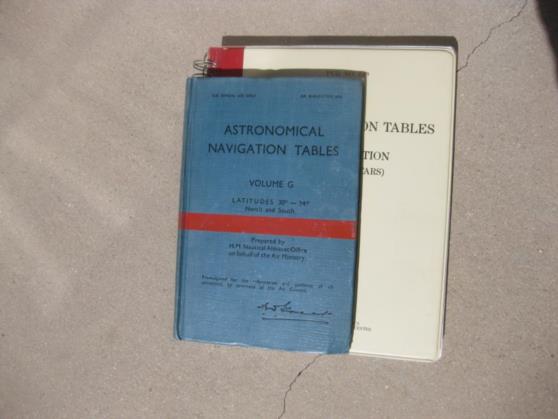
NavList:
A Community Devoted to the Preservation and Practice of Celestial Navigation and Other Methods of Traditional Wayfinding
From: Gary LaPook
Date: 2011 Mar 15, 12:33 -0700
| I decided to complete my evaluation of the accuracy of the selected star
section of H.O. 218. I had previously compared the Hcs computed with
H.O. 218 to those computed with the Navy website for six stars selected
at random. I found that none of the differences exceeded 1.0'. I decided to go further. The adjustment procedure for the change in date since 1941 only corrects for the change in declination due to precession of the equinoxes and cannot correct for each of the stars' proper motions in declination. To determine if we can safely use H.O. 218 for all of the twenty two listed stars in H.O. 218 I found the star with the greatest proper motion in declination and did the same comparison that I did for the previous six randomly selected stars since if this star produced accurate results then all the other twenty two stars will also. Arcturus has the largest proper motion in declination which is almost twice that of the next star, Sirius. Doing this computation for Arcuturus, for March 15, 2010, latitude 30̊ north, longitude zero, hour angle I then went to the Navy website and adjusted the time to 03:05:40 GMT (by trial and error)
Based on this computation I it appears that using H.O. 218 for
calculating computed altitudes for the twenty two selected stars will
produce Hcs withing one minute of those calculated with the most accurate methods so are perfectly usable for practical navigation.
Comparing the methodology for the selected star sections in H.O. 218 with H.O. 249 volume 1 shows advantages and disadvantages to each. With H.O 218 you must calculate the LHA for each star while with H.O. 249 you need to calculate only one LHA, that for Aries, which you then use for all the computations for the entire round of sights. On the other hand, H.O. 249 volume 1 constrains your choice of stars to only the seven stars listed for the current LHA Aries while H.O. 218 allows you to use any of the 22 stars that may be visible at the time. H.O. 218 is a much more compact volume that H.O. 249 but each volume only covers 5° of latitude while H.O. 249 volume 1 covers all latitudes. But if using H.O. 249 you also need to carry at least volume 2 or 3 of H.O. 249 to cover the sun, moon and planets. If you are confining you sailing to a narrow band of latitudes then one or two volumes of H.O. 218 will work and be much more compact than the two volumes of H.O. 249 needed but if covering a great range of latitudes then H.O. 249 will be more compact.
gl --- On Tue, 3/15/11, Gary LaPook <glapook@pacbell.net> wrote:
|







